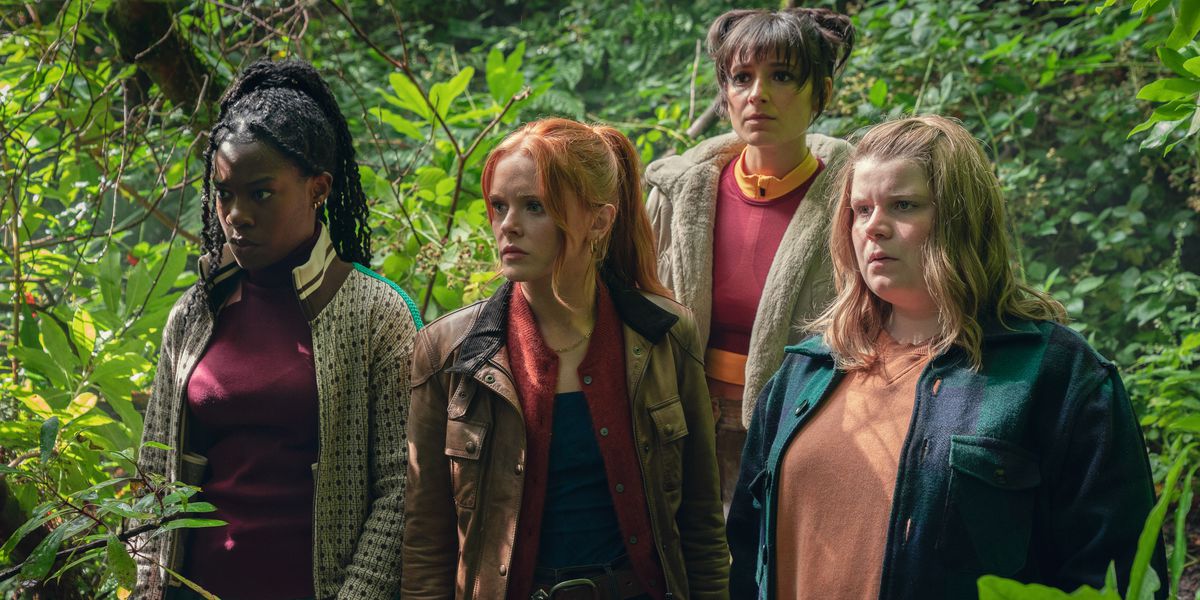The first season of Fate: The Winx Saga established that, while many of the main characters were fairies, it had been hundreds of years since anyone had transformed into fairy form with wings and all. This was in stark contrast to the original animated series, where the main cast of fairies underwent fun and colorful magical-girl transformations every time they used the full extent of their powers. (And throughout the show, the transformations became more and more elaborate as they unlocked new powers).
The live-action show turns the colorful cartoon into something darker and edgier, with no big sparkling eyes to be found. That meant no magical transformations — at least initially.
[Ed. note: This article contains spoilers for seasons 1 and 2 of Fate: The Winx Saga]
Image: Netflix
In the final episode of season 1, fire fairy Bloom (Abigail Cowen) transformed into her fairy form, complete with blazing flame wings and glowing eyes. Showrunner Brian Young tells Polygon that the transformations were always something the creative team kept in mind, and when they got to it, they wanted to do it justice.
“We started the process back in season 1 with Bloom, because we knew we wanted that to be sort of a big surprise at the end of season 1,” he explains. “And then season 2, we were like, OK, so now, we’ve got to do this multiple times. In order for it to have emotional heft we needed to up the stakes a little bit.”
As a big Sailor Moon fan, Young understands the importance of the magical girl transformation, and his goal in season 2 was to up the ante. The writers found a solution by staging three fairy transformations at the same time. Water fairy Aisha, earth fairy Terra, and light fairy Stella rush to Bloom’s rescue. They embrace all their emotions — the good and the bad — and finally unlock their full power to defeat the bad guy. They’re all different types of fairies, which means that their transformations all look different. Aisha’s, for instance, involves swirling water that manifests into fountain-like wings.
“We always talk about it like a music video,” says Young. “I’ve got a picture of the storyboards for it and the whole sequence was massive, and we shot so much footage of all the girls on all these different rigs with all these different backgrounds. Once the VFX process starts, then we conceptually think, like, What do their wings look like? What do the particles look like? And it’s a pretty big undertaking and it’s a conversation that sort of starts prior to us even shooting.”

Photo: Steffan Hill/Netflix
Even though the transformations are expensive to do and tough to get right, Young knew he had to keep them, because they were so pivotal to the show. He talked with length with the original cartoon’s creator, Iginio Straffi, about what made Winx stand out, and Straffi always guided him back to the same point. It wasn’t just the magic and fashion (though a lot of it was the magic and fashion).
“At its core, the Winx Club is about friends,” says Young. “It’s about friendship, it’s about these girls, going through these, not just life and death experiences, but heartbreak, and romance and love and turning to each other, and having this sort of protective little unit. We always talk about the suite itself as this perfect little cocoon of normalcy, as everything around them sort of goes haywire. Making sure that we preserved those friendships was really important.”
Fate: The Winx Saga is streaming on Netflix now.

